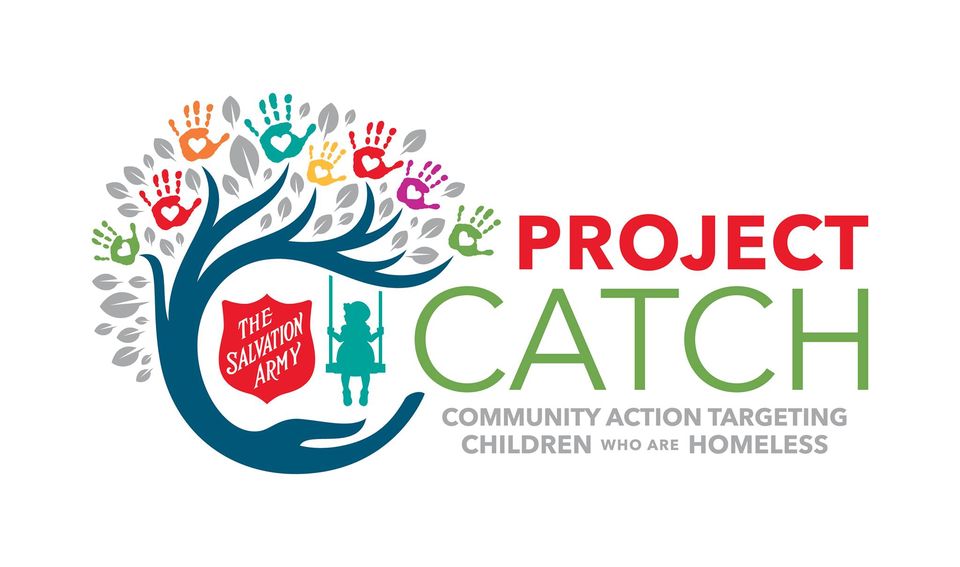Project CATCH: Intervening Early in the Lives of Youth
 Founded in 2011, Project CATCH is a collaborative case management model that provides youth-focused services to children experiencing homelessness in Wake County, the most populous county in North Carolina. Its stated purpose is to equip families in and around Raleigh, the county seat, with services to nurture the healthy growth and development of youth.
Founded in 2011, Project CATCH is a collaborative case management model that provides youth-focused services to children experiencing homelessness in Wake County, the most populous county in North Carolina. Its stated purpose is to equip families in and around Raleigh, the county seat, with services to nurture the healthy growth and development of youth.
While working with families experiencing homelessness and the concept of holistic case management are common practice for The Salvation Army, Project CATCH — which stands for Community Action Targeting Children who are Homeless — centers specifically on youth, a different approach to these standard services.
“We tend to focus on mom and dad a lot, and rightfully so,” says Stephen Gruver, director of social services for The Salvation Army’s Raleigh Center of Hope. “They are experiencing housing insecurity and need our support. But in the midst of doing that, the kids are often forgotten, and they can fall through the cracks. CATCH was designed with the intent of developing a community action and community partnerships to provide these kids with a safety net.”
More than 7,000 children are expected to experience homelessness each year in Wake County alone. Project CATCH aims to bring together all of the early childhood providers in the local community, allowing children and families to be quickly connected to resources. These early childhood providers can include daycare or Head Start programs, as well as pediatricians, caregivers, and liaisons from local school systems.
Crucially, families do not need to be involved in any other Salvation Army programming to be eligible.
“One of the key impacts of Project CATCH is getting us beyond the family shelter and into schools and communities where there is tremendous need for this ministry,” says Major Charles Whiten, area commander in Raleigh. “CATCH connects us with caring individuals and partners in our community who join with us to ensure children experiencing homelessness and their families are supported holistically.”
The process begins with a full screening for the family, followed by program referrals and ensuring that basic needs are being met, whether it be with food, clothing, or stability. Then, a continuum of care is put in place to aid the family in the optimal way for their circumstances.
Approximately 50 organizational partners regularly work alongside The Salvation Army in assisting youth and families in maximizing physical, cognitive, and social/emotional development. This can be similar to some other programming but with a specialized focus on young people and dedicated services including therapeutic support, educational support, medical care, and anything else that a child and family might need.
“We also want to provide this support in a way that knows that the child is facing high levels, sometimes unimaginable levels, of trauma and adverse childhood experience,” says Gruver. “Also, we want to be able to be that community outreach and provide case management for families.”
Monthly meetings of the collaborative partners take place at a Salvation Army facility in Raleigh, often including guest speakers. These gatherings also seek to foster consistent communication and the free flow of best practices within the network.
Circle of Parents, a program funded through the Positive Childhood Alliance and established through Project CATCH, is a unique offshoot of the program. The focus is to help parents prevent child abuse and homelessness, essentially through the lens of a self-help parenting support group. There are four small groups in Wake County, including one that meets regularly at The Salvation Army’s Center of Hope in Raleigh, and the Army provides training on the support and facilitation of these meetings.
Full-time staff support CATCH in Raleigh, in addition to part-time employees and qualified interns, specifically with students focused on seeking degrees in social work. While Project CATCH is embedded in Wake County and the Raleigh area, it is also a scalable program that could be implemented in other communities with some small adjustments.
“I think one of the beauties of the program is that it can upscale or downscale as you want it to, depending on funding and logistics,” says Gruver. “It’s something that the Army could adapt in just about every community, depending on the size of the reach.”
In the most recent program year, Project CATCH served over 350 families through outreach while also helping to train over 150 childcare providers and 50 homelessness service providers.
“We, as the Army, have to try and help to intervene in these kids’ and families’ lives within our community to help them break the difficult cycles of homelessness and poverty,” says Gruver. “I think that is what CATCH was started for and still remains true to. The focus has to be on how we help to intervene at an earlier part of their life so that we can make sure these kids are able to pursue something better.”
Project CATCH’s impact is ongoing, and, as Major Whiten poignantly outlines, “God’s love is shown brightly through the care and passion of those who minister through Project CATCH.”
